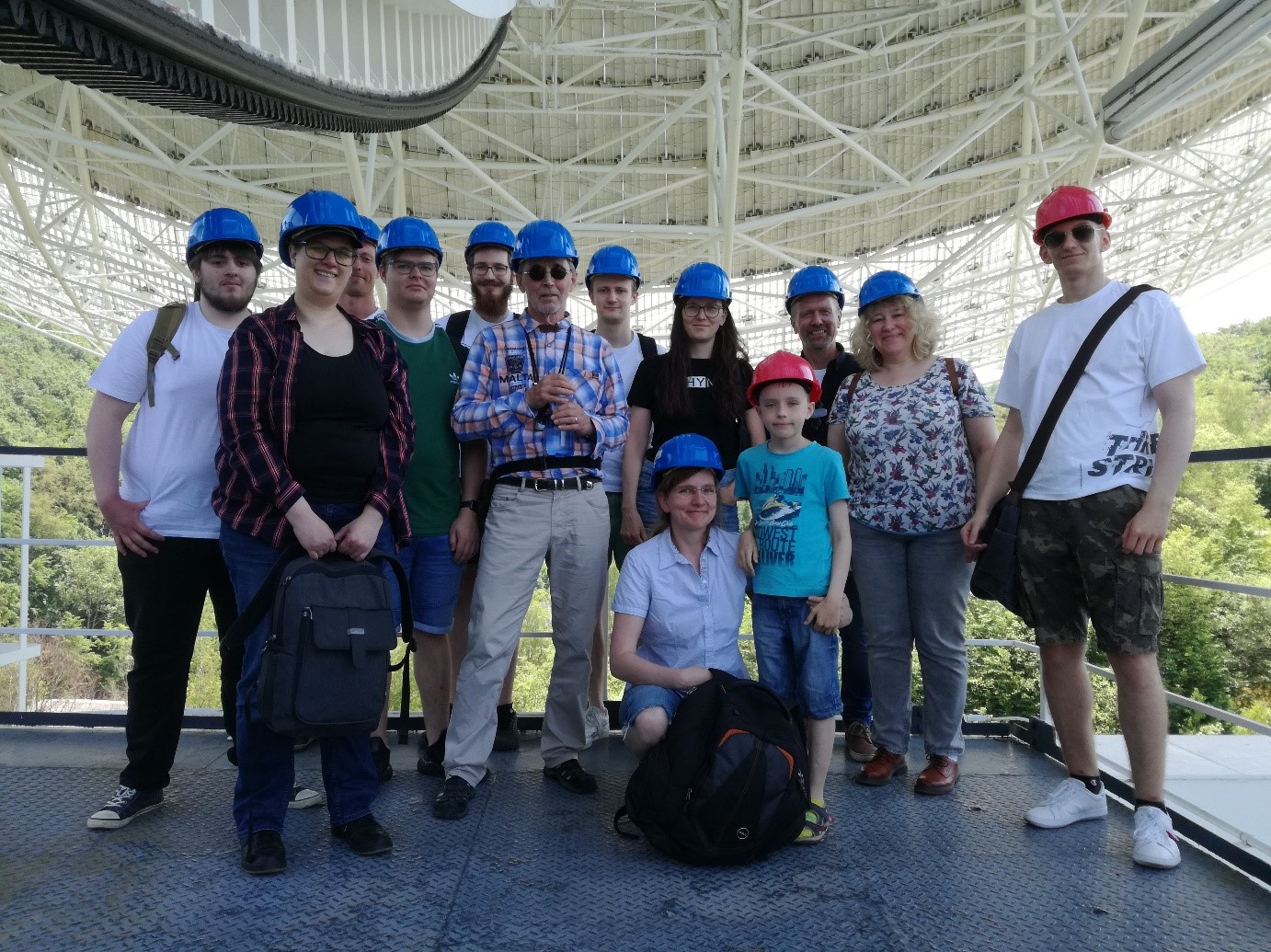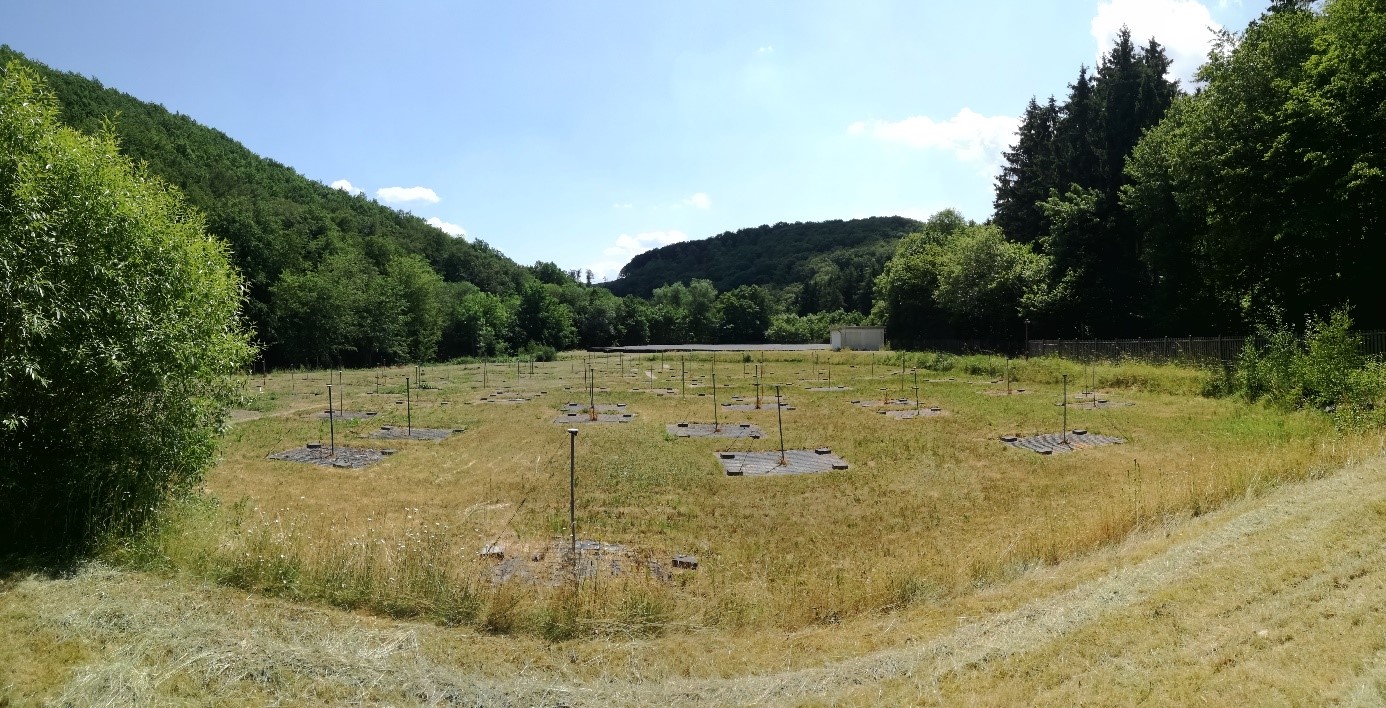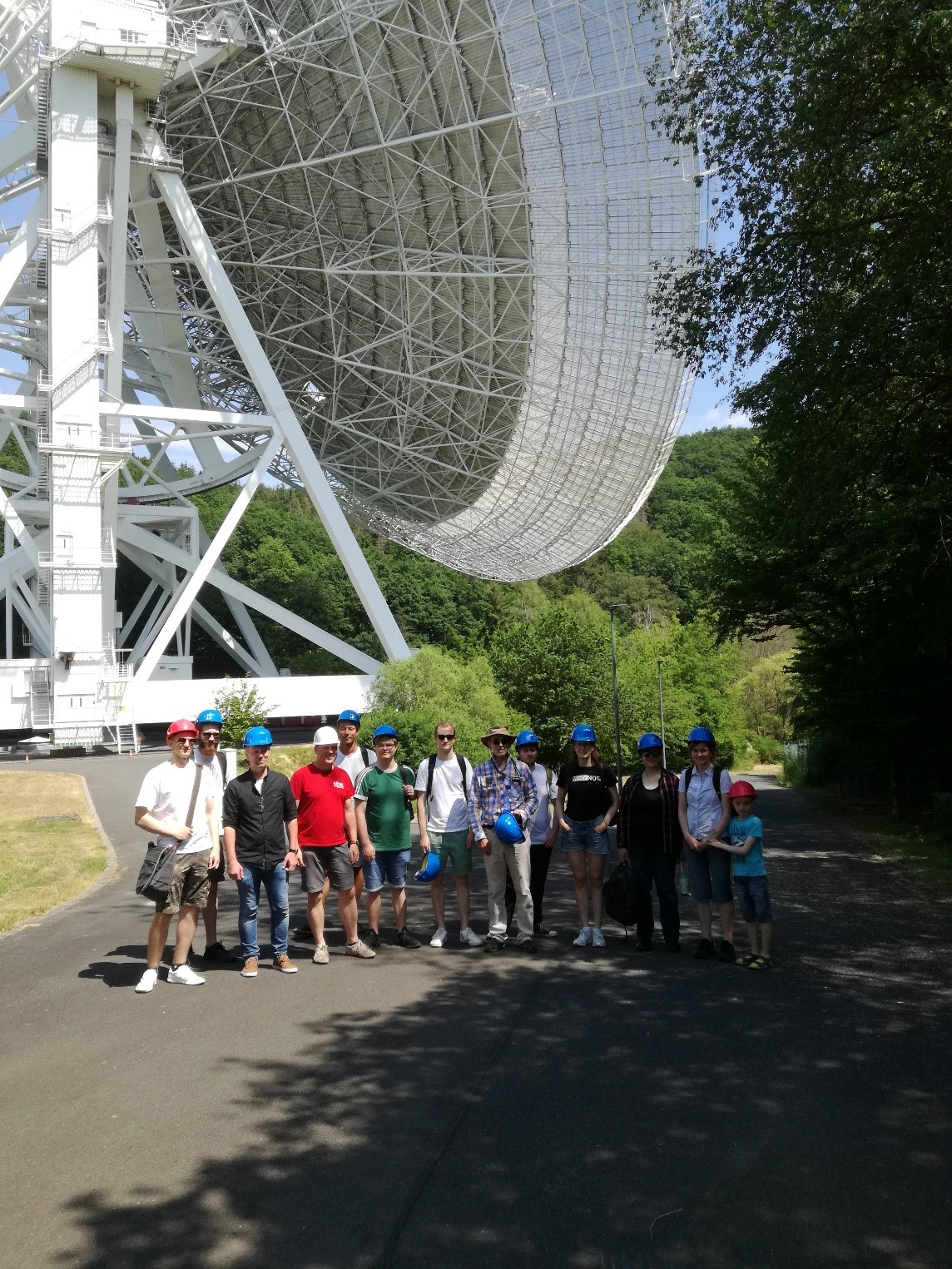Excursion to the Effelsberg radio telescope
Students experience fascinating insights into radio astronomy
As part of the course "Methods and Tools of Modern Astronomy", students from the Faculty of Communication and Environment went on two exciting excursions led by Dr Monika Marx-Zimmer and Prof Frank Zimmer. One of them took them to the Effelsberg radio telescope, the second-largest fully mobile radio telescope in the world. There they gained exciting insights into the history, construction and functioning of the impressive instrument.
A week earlier, the students had already visited - partly by bicycle - the Test and Measurement Service (PMD), a branch of the Federal Network Agency in Rheurdt, where they learned interesting facts and stories about interfering radiation, bearing and adventurous field operations.
On 16 June, they went to the Effelsberg radio telescope, which, with a mirror diameter of 100 m, is impressive not only because of its size. It belongs to the Max Planck Institute for Radio Astronomy in Bonn and is located in a valley in the Eifel near the village of Effelsberg.

Group of students on the elevation platform of the radio telescope (Photo: Dr. Alex Kraus)
On a sunny day, Dr. Alex Kraus, the director of the observatory, led the group to the telescope and explained its fascinating technology. To avoid interfering with the highly sensitive measurements, all cell phones were switched off or put on airplane mode beforehand. According to Dr. Kraus, the construction allows the very large and heavy mirror, weighing approximately 1900 tons, to regain a parabolic shape in every observing position (homologous deformation). The average deviation from the ideal parabolic shape is minimal, ideally around 0.55 mm. After getting an overview in the control room, the students admired the dimensions of the radio telescope on the elevation platform, 20 meters high. The telescope can observe radio signals from very large distances. A few years ago, water was detected at a record distance of 11 billion light years. The telescope is also used to study extreme locations in the universe such as pulsars (cosmic lighthouses) and active black holes in distant galaxies, as well as stellar nurseries, supernova remnants, and magnetic fields in galaxies. Many complex molecules in the space between stars were first discovered using the Effelsberg telescope. The telescope has also been used to observe space debris. Space debris objects as small as nine millimeters, which were created from collisions in Earth's orbit, could be detected with the telescope at distances of up to 1000 km. Measurements were carried out in collaboration with the TIRA radar system of the Fraunhofer Institute for High-Frequency Physics and Radar Techniques in Wachtberg. In conjunction with other radio telescopes, continental drift on Earth is also observed. The telescope had a very special task in monitoring the landing of NASA's "InSight" (2018) and "Perseverance" (2021) probes on Mars.
The students learned how this research instrument can be precisely controlled despite its total weight of about 3200 t and what role the telescope plays in the worldwide network with other radio telescopes, which enables highly precise measurements of cosmic processes.

LOFAR field at the Effelsberg site (Photo: Professor Frank Zimmer)
Afterwards, they went to the LOFAR station Effelsberg situated nearby. The "Low Frequency Array" is a digital radio telescope where the alignment is not done by moving the antennas but on the computer. LOFAR currently consists of 52 stations distributed in eight European countries. In total, about 100,000 small dipole antennas are interconnected to form a telescope the size of Europe. The measurement data from the stations are transmitted via fibre optic lines to a computing institute at the University of Groningen, where a supercomputer processes the data into an image of the radio sky. By interconnecting the many antennas, a very high resolution can be achieved.
The excursion to the Effelsberg radio telescope and the LOFAR station offered the students fascinating insights into the world of radio astronomy. They were able to experience first-hand how these impressive instruments are used to explore the universe and what insights they can provide. The excursion was an impressive experience that the students will certainly remember for a long time.

The student group at the farewell with Dr Alex Kraus, Director of the Observatory, 4th from left (Photo: Dr Monika Marx-Zimmer)
